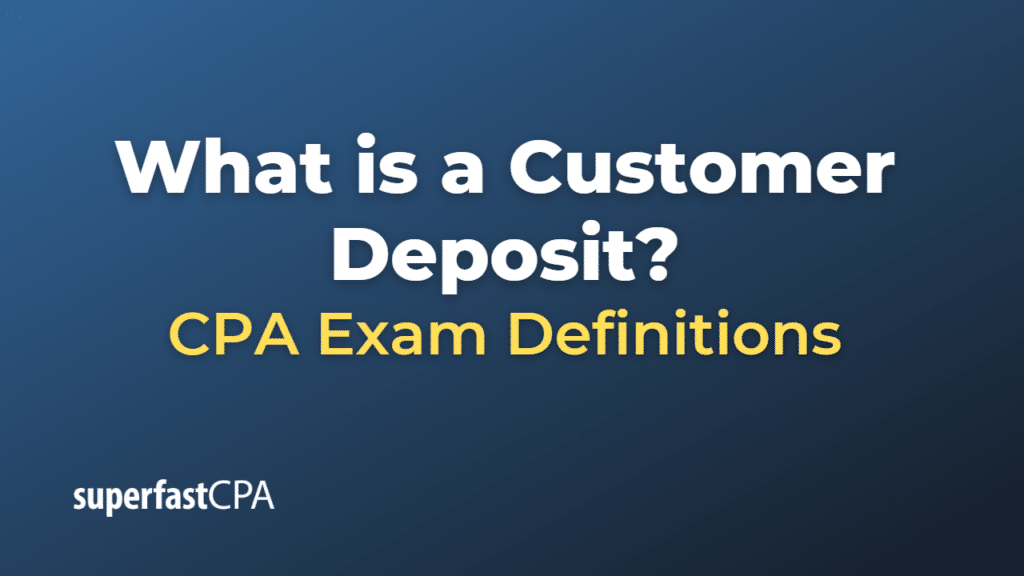Customer Deposit
A customer deposit is money paid by a customer to a company before the company has delivered goods or provided services. These are also commonly known as advance payments.
This practice is common in many industries, particularly in those that involve significant production or delivery times, large or customized orders, or high upfront costs. It provides the company with cash flow to cover initial production or setup costs and reduces the risk of non-payment after the goods are delivered or the service is completed.
From an accounting perspective, when a company receives a customer deposit, it records the amount as a liability on its balance sheet, not as revenue. This is because the company has an obligation to deliver the goods or provide the service. The deposit is only recognized as revenue when the goods are delivered or the service is provided, in accordance with the revenue recognition principle.
If for some reason the company cannot fulfill the order, it would generally be required to return the deposit to the customer, unless other terms have been agreed upon. Similarly, if the customer cancels the order, whether the deposit is refundable or not would typically depend on the terms of the agreement.
Example of a Customer Deposit
Suppose a furniture manufacturer, WoodCraft Inc., receives an order from a customer for a custom-made dining table. The cost of the table is $2,000, and WoodCraft Inc. requires a 50% deposit before it begins the work. The customer pays $1,000 (50% of $2,000) as a deposit.
When WoodCraft Inc. receives this deposit, it records it as a liability on its balance sheet, under “Customer Deposits” or a similar account. This is because WoodCraft Inc. now has an obligation to the customer to make and deliver the dining table.
Now, let’s say it takes WoodCraft Inc. two months to make the table and deliver it to the customer. When the table is delivered, WoodCraft Inc. has fulfilled its obligation to the customer, so it can recognize the $1,000 deposit as revenue. At the same time, it reduces its “Customer Deposits” liability by $1,000.
If the customer pays the remaining $1,000 upon delivery, WoodCraft Inc. would record this as revenue at that time as well, because it has now fully earned the total $2,000 price of the table.
This example shows how customer deposits are recorded and then recognized as revenue when the corresponding goods or services are provided.













